So, I have a following piece of code in my Main() method
for (int x = 0; x < 100; x++) // to mimic BenchmarkDotnet runs
for (int y = 0; y < 10000; y++)
LogicUnderTest();
Next, I have the following class under the test
[MemoryDiagnoser, ShortRunJob]
public class TestBenchmark
{
[Benchmark]
public void Test_1()
{
for (int i = 0; i < 10000; i++)
LogicUnderTest();
}
}
After running Main() under dotMemory for around 6 minutes, I receive the following results
The app starts at 10Mb and goes up to 14Mb.
But when I run BenchmarkDotnet test I get this

I see that I've got 2.6GB allocated. What? It seems not good at all. Also, I can't see Gen1 and Gen2 columns. Does it mean that the code didn't allocate anything in them so there is nothing to display?
How can I interpret the results? It seems totally fine in DotMemory, but not ok in BenchmarkDotNet. I'm pretty new at BenchmarkDotnet and will be helpful for any information regarding the results.
PS. LogicUnderTest() works extensively with strings.
PSS. Roughly, LogicUnderTest is implemented like this
void LogicUnderTest()
{
var dict = new Dictionary<int, string>();
for (int j = 0; j < 1250; j++)
dict.Add(j, $"index_{j}");
string.Join(",", dict.Values);
}
